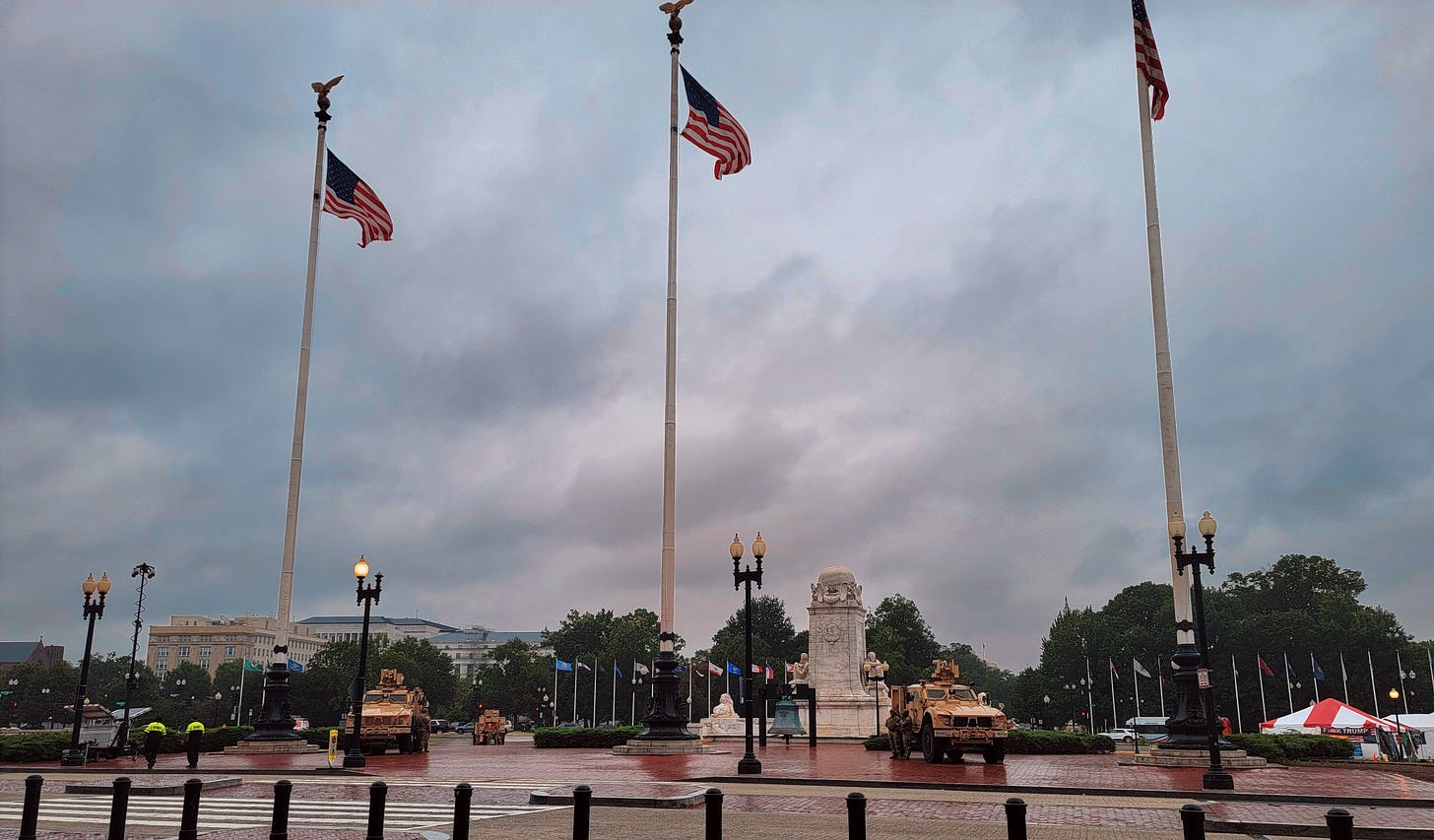The Silence Of DC
Dispatches from the Occupied Zone
So this is how it happens: not with a bang or a whimper but with two MRAPs parked theatrically in front of Union Station with their empty turrets pointed at the entrance.
We are neck-deep in the Age of Spectacle and so of course Trump’s DC occupation looks like a scene from some dystopian action flick, complete with ominous clouds and ironic flags waving…
Keep reading with a 7-day free trial
Subscribe to BANNED IN YOUR STATE to keep reading this post and get 7 days of free access to the full post archives.


